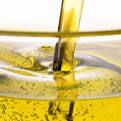










Balsam Tolu
Myroxylon balsamum var. balsamum
Family: Fabaceae (Leguminosae)
Synonyms: Toluifera balsamum, Balsamum tolutanum, B. americanum, Myrospermum toluiferum, Thomas balsam, resin Tolu, opobalsam.
General Description A tall, graceful tropical tree, similar in appearance to the Peru balsam tree. The balsam is a pathological product, obtained by making V-shaped incisions into the bark and sap wood, often after the trunk has been beaten and scorched. It is a 'true balsam.
Distribution Native to South America, mainly Venezuela, Colombia and Cuba, also cultivated in the West Indies.
Other Species There are many types of South American balsam-yielding trees, such as the Peru balsam.
Herbal /Folk Tradition The balsam works primarily on the respiratory mucous membranes, and is good for chronic catarrh and non-inflammatory chest complaints, laryngitis and croup. It is still used as a flavour and mild expectorant in cough syrups and lozenges. As an ingredient in compound benzoin tincture and similar formulations. It is helpful for the treatment of cracked nipples, lips, cuts, bedsores, etc.
Actions Antitussive, antiseptic, balsamic, expectorant, stimulant.
Extraction The crude balsam is collected from the trees. It appears first in liquid form, then hardens and solidifies into an orange brown brittle mass. An 'essential oil' is obtained from the crude by 1. steam distillation. or 2. dry distillation. ( A resinoid and absolute are also produced for use primarily as fixatives.)
Characteristics 1. a pale yellow brown liquid with a sweet-floral scent and peppery undertone. 2. An amber-coloured liquid with a rich balsamic-floral scent, which slowly solidifies on cooling into a crystalline mass.
Tolu balsam blends well with mimosa, patchouli cedarwood and oriental, spicy and floral bases.
Principal Constituents the balsam contains approximately, 80 per cent resin, 20 per cent oil, with cinnamic and benzoic acids, small amounts of terpenes, and traces of eugenol and vanillin.
Safety Data Available information indicates it to be non-toxic, non-irritant, possible sensitization.
Aromatherapy/ Home Use
Skin care: Dry chapped and dry skin, eczema, rashes scabies, sores, wounds, Respiratory system: Bronchitis, catarrh, coughs, croup, laryngitis. 'It may be used as an inhalant by putting about a teaspoon into a steam bath.
Other Uses As a fixative and fragrance component in colognes, cosmetics and perfumes (especially the dry distilled type) Some use in pharmaceutical preparations, e.g. cough syrups. Low levels used in many major food products, especially baked goods.
Reference: The Encyclopedia of Essential Oils: Julia Lawless
Articles Latest
- Chamomile Roman - Chamaemelum nobile
- Chamomile Maroc - Ormenis multicaulis
- Chamomile German - Matricaria recutica
- From Biology To Aromatherapy
- Plant Messengers
- Celery Seed-Apium graveolens
- Cedarwood Virginian - Juniperus virginiana
- Cedarwood, Texas- Juniperus ashei - Essential oils
- Cedarwood Atlas- Cedrus atlantica - Essential Oils
- Cassie - Acacia Farnesiana - sweet acacia
- Cassia - Cinnamomum Cassia
- Cascarilla Bark - Croton eluteria
- Carrot Seed- Dacus Carota
- CARDAMON
- CARAWAY
- CANANGA
- CAMPHOR
- CALAMUS
- Calamintha-Calamintha officinalis
- CAJEPUT- Melaleuca cajeputi
- Plant Expression
Articles-Most Read
- Home
- Balsam Canadian - Abies balsamea
- Balsam Peru
- Copaiba Essential Oil
- North America: Tea Tree and Monarda-3
- Basil French - Ocimum basilicum
- Basil Exotic
- North America: Tea Tree and Monarda-2
- Exploring Transcultural Constants
- Thyme Essential Oil
- Balsam Tolu
- Palma Rosa
- Bay - West Indian - Pimenta racemosa
- The Bioactivity of Essential Oils
- Benzoin - Styrax benzoin
- Why Pharmacology Cannot Demonstrate Essential Oil Efficacy
- Exploring Essential Oil Activity The Conventional Way
- Complex information From Plants
- Aromatherapy: An Answer
- Contacts
